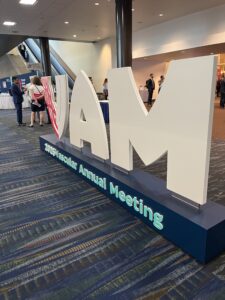 Results from the CLN-PRO-V007 pivotal phase 3 clinical trial of the acellular tissue engineered vessel (ATEV; Humacyte) in arteriovenous access for patients at high risk of autologous arteriovenous fistula (AVF) maturation failure with end-stage renal disease were presented at the Society for Vascular Surgery (SVS) Vascular Annual Meeting (VAM 2025; 4–7 June, New Orleans, USA).
Results from the CLN-PRO-V007 pivotal phase 3 clinical trial of the acellular tissue engineered vessel (ATEV; Humacyte) in arteriovenous access for patients at high risk of autologous arteriovenous fistula (AVF) maturation failure with end-stage renal disease were presented at the Society for Vascular Surgery (SVS) Vascular Annual Meeting (VAM 2025; 4–7 June, New Orleans, USA).
The trial’s results, presented by Mohamad A Hussain (Brigham and Women’s Hospital and Harvard Medical School, Boston, USA), demonstrated the superiority of ATEV over autologous AVF in high-risk patients with end-stage kidney disease (ESKD).
CLN-PRO-V007 was a prospective, multicenter, two-arm, randomised controlled trial comparing the efficacy and safety of ATEV and AVF in ESKD patients on haemodialysis undergoing single-stage surgical vascular access creation.
AVF is the preferred method for vascular access in haemodialysis patients as, when successful, it can reduce long-term catheter use and associated complications. However, women and patients with obesity and diabetes are at higher risk of AVF maturation failure, meaning the fistula doesn’t develop adequately for use in dialysis, often resulting in prolonged catheter dependence and increased morbidity.
ATEVs are bioengineered blood vessels grown from human vascular cells, designed to restore, replace, or enhance the function of damaged or diseased vascular tissue.
The trial enrolled a total of 242 ESKD patients, of which 110 were specified as high-risk of fistula non-maturation (defined as all as females and males with a body mass index (BMI) ≥ than 30kg/m2 and having diabetes).
Humacyte previously announced positive topline results from the trial in October 2024, whereby the ATEV demonstrated superior function and patency at six and 12 months (co-primary endpoints) compared to autogenous fistula.
In the latest study ATEV was observed to have better functional patency, usability, and a comparable access-related complication profile compared to AVFs in this high-risk subgroup of patients.
The safety profile of the ATEV was reported to be comparable to AVF, with similarly low rates of infections. The cohort of patients treated with ATEV had more thrombosis and stenosis events compared to AVF, however the majority were successfully treated. Patients treated with ATEV had a lower need for maturation and surgical revision procedures compared to AVF.
“Often, we see patients who are considered high-risk and in end-stage kidney failure needing multiple interventions and autologous arteriovenous fistulas often failing,” said Hussain, the lead author of the study. “Acellular tissue engineered vessels are a new and exciting technology in regenerative medicine that has the potential to make a great impact in how we treat a vulnerable population.”
Authors note, a currently enrolling randomised control study is looking specifically at high-risk ESKD female patients across multiple centres in the USA who receive ATEV or AVFs to further analyse the effectiveness specifically in the female population. For uses other than US Food and Drug Administration (FDA) approval in the extremity vascular trauma indication, the ATEV is an investigational product and has not been approved for sale by the FDA or any other regulatory agency.









